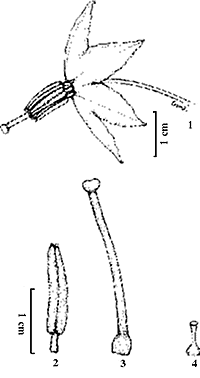Studies on floral biology and visitors were done over different years in two populations (Brotas and Campinas) of "jurubeba," a common neotropical invader shrub. The flowers are dish-shaped and have a mellow odour. Pale-violet petals contrasting with yellow anthers make a visually attractive set. Pollen is the only reward for visitors. The species is alogamous. On average, 19% of the flowers in both populations had short styles; only long-styled flowers generated fruits, thus presenting a functional andromonoecism. Fruiting ratios in natural conditions differed between Brotas (43%) and Campinas (17%). The fruiting ratio due to manual polinization was 46% in Brotas and nihil in Campinas, this probably being due to a long dry period. Both microsporogenesis regularity and pollen high viability indicate that the process of sexual reproduction is normal. Poricide anthers and other flower features of S. paniculatum are associated with the buzz pollination syndrome, which requires bees with a specific behavior for pollen removal. The main pollinators are Oxaea flavescens, Bombus morio, and Xilocopa frontalis in the Campinas population, and Augochloropsis sp 1 e Augochloropsis sp 2 in the Brotas population.
Solanum; andromonoecism; buzz pollination




